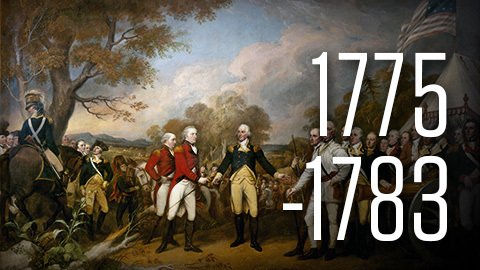American history is filled with powerful stories of struggle, growth, freedom, and change. From the founding of the United States to the challenges of today, America’s past continues to shape its present and future. Understanding this history helps people make sense of the values, culture, and politics of the country.
In this article, we’ll walk you through the key events, turning points, and lessons from American history using simple English and clear explanations.
The Beginning of American History
Before it became a country, the land that is now the United States was home to Native American tribes for thousands of years. Each tribe had its own language, culture, and way of life.
In the late 1400s and early 1500s, European explorers began arriving, and in the 1600s, the British, French, Dutch, and Spanish built colonies in different parts of North America.
Colonial America
- Jamestown, Virginia (1607): First permanent English settlement
- Plymouth Colony (1620): Pilgrims arrived seeking religious freedom
- Colonies grew through farming, trade, and slavery, especially in the South
Tensions between the American colonies and Britain started to grow in the 1700s, mostly over taxes and control.
The American Revolution (1775–1783)

The American Revolution was the war for independence between the 13 colonies and Great Britain.
Key events:
- 1773: Boston Tea Party – a protest against British taxes
- 1775: Fighting begins at Lexington and Concord
- 1776: Declaration of Independence written by Thomas Jefferson
- 1781: Colonists win the war
- 1787: U.S. Constitution is written, setting up the government
The revolution led to the birth of the United States as an independent country.
Westward Expansion and Conflict
As the U.S. grew, settlers moved westward. This was called Manifest Destiny—the belief that Americans had the right to expand across the continent.
But this expansion caused:
- Land loss and suffering for Native Americans
- Conflicts with Mexico (leading to the Mexican-American War in 1846)
- Increased tensions over slavery
Civil War and the Fight Over Slavery (1861–1865)
The issue of slavery deeply divided the country. The Southern states relied on enslaved people for their economy, while the Northern states pushed to limit or end slavery.
When Abraham Lincoln was elected president in 1860, several Southern states left the Union.
This started the Civil War between:
- Union (North) – Wanted to keep the country together and end slavery
- Confederacy (South) – Fought to keep slavery and gain independence
Key facts:
- Over 600,000 Americans died
- 1863: Lincoln issued the Emancipation Proclamation to free slaves in the South
- 1865: Union wins, and slavery is officially ended
The war left lasting scars but was a major step toward equality.
Reconstruction and Segregation (1865–1900)

After the war, the U.S. tried to rebuild. This period is called Reconstruction.
- Former slaves (freedmen) gained rights
- 13th, 14th, and 15th Amendments gave freedom, citizenship, and voting rights
- But after Reconstruction ended, Jim Crow laws in the South enforced segregation and took away many rights from Black Americans
The Industrial Revolution
In the late 1800s and early 1900s, the U.S. transformed:
- Factories and machines changed how goods were made
- Railroads connected cities and helped trade
- Immigrants arrived in huge numbers, seeking jobs and freedom
While the economy grew, workers faced long hours, low pay, and dangerous conditions. Labor unions began to fight for change.
World Wars and Global Power
World War I (1914–1918)
- U.S. joined in 1917 to help Allies win
- War ended with millions dead but led to new global roles for America
The Great Depression (1929–1939)
- Stock market crash led to mass unemployment and poverty
- Franklin D. Roosevelt launched the New Deal to help the economy recover
World War II (1939–1945)
- U.S. joined after Pearl Harbor attack in 1941
- Fought Germany, Japan, and Italy
- War ended in 1945 after atomic bombs were dropped on Hiroshima and Nagasaki
The U.S. became a world superpower after World War II.
Civil Rights Movement (1950s–1960s)
Despite earlier progress, African Americans still faced discrimination. The Civil Rights Movement pushed for equality under the law.
Leaders like:
- Martin Luther King Jr.
- Rosa Parks
- Malcolm X
Fought to end segregation and win voting rights.
Key victories:
- Brown v. Board of Education (1954): Ended school segregation
- Civil Rights Act (1964): Banned discrimination
- Voting Rights Act (1965): Protected voting rights
The movement inspired other rights efforts for women, Latinos, Native Americans, and LGBTQ+ people.
The Cold War Era (1947–1991)
The U.S. and the Soviet Union entered a period of tension known as the Cold War.
Key moments:
- Korean War (1950–1953)
- Cuban Missile Crisis (1962)
- Vietnam War (1955–1975)
- Space Race: U.S. lands a man on the moon in 1969
Though no direct war was fought, both countries competed in military, space, and political influence.
Recent History and Modern Challenges
Since 1990, the U.S. has faced major events and changes:
- Terrorist attacks on 9/11 (2001): Changed U.S. foreign policy and led to wars in Afghanistan and Iraq
- Financial crisis (2008): Caused by a housing market crash, leading to job loss and recession
- Barack Obama elected in 2008: First Black president in U.S. history
- COVID-19 pandemic (2020–2022): A public health and economic crisis
- Protests for racial justice after deaths like George Floyd’s
- Political divisions and debates over democracy, healthcare, immigration, and climate
Lessons from American History
History isn’t just about dates. It teaches us valuable lessons:
- Freedom and democracy take work
- Equality is not given—it must be fought for
- Diversity is a strength
- Mistakes of the past must be remembered to avoid repeating them
- Citizens must stay informed and engaged
Conclusion
American history is filled with bold actions tough struggles and moments that changed the world From the fight for independence to battles for civil rights each chapter of history shows how the country has grown stronger through challenge and change
Understanding American history helps us respect where the country came from and make better decisions for its future
Also read – Best USA Tax Refund Tips to Maximize Your Money in 2025






